Want to make your garden sustainable? That's great! Both for yourself, for the environment and especially for the animals and plants that live in your garden paradise. Unfortunately, the trend is towards monotonous, lifeless and gray stone deserts in your own garden, which simply do not offer bees, birds and other animals a basis for life. And if they do, the use of pesticides then gives them the rest.
With the tips from this article, I want to help you make your garden more eco-friendly and an organic and climate-friendly mecca of biodiversity. Let's go!
Here you can find an overview of all tips in advance:
- Create compost in the garden
- Use soil without peat
- Use natural fertilizer
- Know the tasks of the soil inhabitants
- Provide more shelter for animals
- Choosing sensible fences and facades of your natural garden
- Planting diverse and native plants in the garden
- Collect and exchange seeds
- Create space for vegetables and fruits
- Adhere to mixed culture and crop rotation
- Use natural pesticide
- Prefer garden furniture from domestic woods
- Paving paths curved and not too dense
- Leave garden waste lying and rotting
- Offer pond, mounds & ditches for cooling
- Do without motors and prefer manual labor
- Upcycle worn items in the garden
- Collect and use rainwater
- Save water when watering
- Save energy through minimalist lighting
Advantages: Why is it important to grow a sustainable garden?
Für den Extra-Schuss an Motivation zur Anlage eines nachhaltigen Gartens möchte ich dir zunächst die wichtigsten Vorteile eines echten Naturgartens to the hand.
Personally, what appeals to me most is the constant change. A natural garden is always in motion. Plants relocate, new animals arrive. Nothing is final. A true natural garden is also uniquely wild, rather than overly tended.
But besides the variety, there are of course many other reasons that I do not want to withhold from you:
Protect the environment and conserve resources
By having a consciously sustainable garden, you can make a big contribution to environmental protection and natural resources spare. From climate-friendly garden furniture made from domestic, certified woods, to the reuse of construction waste for the creation of a flower bed.
Promote biodiversity
A garden close to nature has a great, ecological value in the fight against the species extinction. The Interplay of the garden material and native seasonal evergreen and flowering plants., creates ideal conditions for wildlife.
Birds like to come here because they have good Nesting material and a wide range of food find. Insects, hedgehogs and mice also have everything they need to live there.
Enjoy relaxing garden paradise
As the owner:in of a natural garden, you benefit, for example, from a unique Variety of plants and animals, whose activity you can enjoy in peace and quiet - including the soothing chirping of birds.
Particularly pleasant here is also the small workload, as you simply let nature take its course.
Save cash
For example, a sustainable garden allows you to Cost savings for pesticides and chemical fertilizers. Plus, you won't have to buy organic food if you grow your own tomatoes, lettuce, carrots and herbs. Through sustainable behavior, you can save money.
20 tips for sustainable gardening in your own natural garden
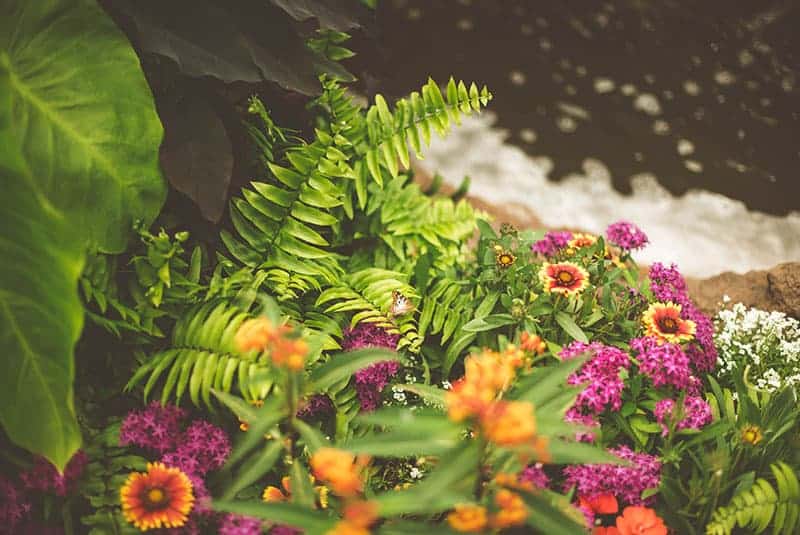
Motivated enough? Then it's time to get down to business! Always consider sustainable gardening as a continuous development processEach individual step will bring you further. Use the following tips, which are relatively easy to integrate into your daily garden routine.
1. create compost in the garden
The Creation of a compost heap saves the energy-intensive removal of your organic waste and also prevents the unloved fruit flies in the house. Instead you get fertile soil and a natural fertilizer.
Cut branches, lawn clippings and even fruit and vegetable scraps from the kitchen can be conveniently disposed of on your compost and the "Garden habitat" even more interesting for many animals make. But make sure that the compost pile is preferably in partial shade and on an open ground.
Don't have room for a compost pile? No issue! Look with pleasure in my Interview with Wurmkiste.at in. Even if you don't have a garden, you can use a worm bin or a Bokashi bucket in your home to decompose your organic waste into fertile soil.
2. use soil without peat
Peat provides better aeration of the garden soil, but does not come without environmental damage. After all, peat comes from the diverse peatlands - and that's where it should stay. They are in fact home to many endangered species and are also huge carbon reservoirs. Although they cover only 3 percent of the Earth's surface, they actually sequester one-third of all terrestrial carbon - twice as much as our planet's forests.₁
According to NABU you should as an alternative to peat prefer humus-rich soil with air pores and soil animals, so that healthy plants can thrive.
3. use natural fertilizer
Chemical fertilizers have no place in a sustainable garden. Instead, you can rely on your compost pile - because it will provide you with homemade, natural fertilizer from your Organic waste. Whether branches, leaves, lawn clippings or apple and onion peels - these plant residues are a wonderful fertilizer for your garden. You'll have to be a little patient, but you'll be able to do without chemicals.
In the vegetable garden is often also worth the so-called Green manure. In the process, plants are already grown in the fall, which simply remain in the bed over the winter. Thus, the soil is nicely loosened by the roots. Plant residues are also good for the soil climate.
4. know tasks of soil inhabitants
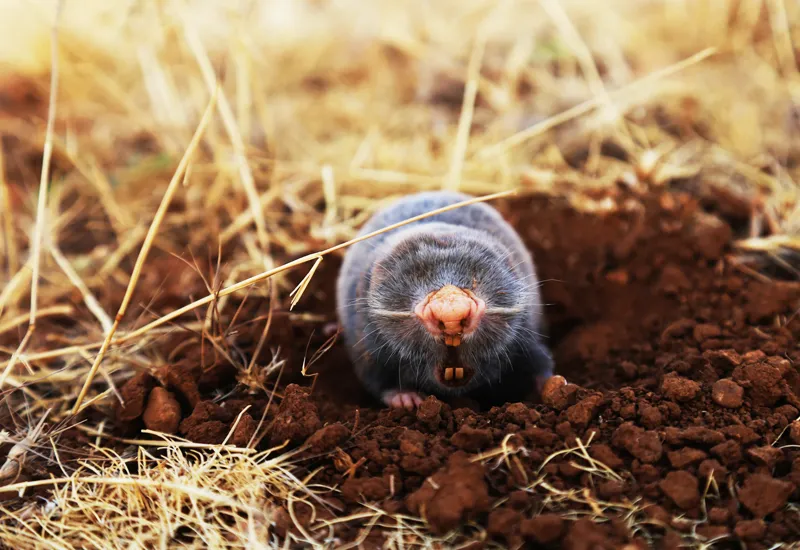
To understand and optimize the diversity in your garden, you should also think a bit about the lives and tasks of the garden's inhabitants.
Matching a few Tasks of the respective beneficial insects in the garden:
- Mole: The presence of a mole confirms that the soil in your garden is healthy and has enough microorganisms to eat. He also eats, for example, snails, grubs or snail larvae and is therefore a useful pest controller.
- Earthworm: The earthworm loosens and aerates the soil of your garden and enriches it with natural fertilizer. Its droppings serve as a valuable plant nutrient.
- Springtail: Like earthworms, springtails eat dead organic matter and leave behind fertile humus. They thus make a valuable contribution to healthy and nutrient-rich soil.
- Mite: Lots of mites in your garden are basically a sign of nutrient-rich soil. For example, they break down organic waste at an insane rate and counteract pests.
Tip: If you're interested in the animal kingdom, be sure to check out the Wildlife Blog over. Stephan is a nature filmmaker and provides you with breathtaking videos and short films in top quality.
5. provide more shelter for animals
Stone, leaf and dead wood piles you should consciously provide to welcome animal guests in your sustainable garden. They serve them as a shelter but also to store food. For bees or bumblebees, for example. Hedgehogs feel especially at home in piles of leaves.
Of course, your Garden also bird friendly be! For swifts or redstarts, for example, you can put a few Nesting boxes provide. Wrens and warblers, on the other hand, like to build their nests in hedges. According to NABU, you should therefore not cut hedges from March to June.
Tip: With this bee hotel* you can, for example, offer a home to one of the most important farm animals in the world. You can also learn more about this in the article about the Creation of a bee friendly garden.
6. choose sensible fences and facades of your natural garden
If you're concerned about a garden fence, be sure to make sure that animals like hedgehogs can still cross over to the neighbor's property. A sustainable fence is Very durable and may well hung with potted plants or directly overgrown by climbing plants such as ivy or blackberry be. The dense mesh provide a home for many birds.
Also Hedges and trees provide protection and shelter - and incidentally also make excellent natural privacy screen.
Tip: You yourself also benefit from the climbing plants in the garden. You can for example from ivy leaves a dishwashing liquid itself make
7. planting diverse and native plants in the garden
In your garden should be healthy Mix of flat and tall plants prevail. Large trees act as a cooling air conditioner in summer and provide adequate shade for many living creatures.
Make sure the plants are all native to our area, as they are both adapted to the climate and soils and therefore more hardy. A bed of native Wildflowers provides plenty of color and ensures ideal living conditions for countless insects, such as bees or butterflies.
Here are a few further articles mit heimischen Pflanzen dazu:
8. collect and exchange seeds
Once the first year is over, you can In subsequent years, always return to the seeds from the previous year, Conserve natural resources and save cash. So, wisely collect the seeds of vegetable plants or wildflowers. You can also use overstocked food from the pantry (e.g. potatoes, peas and garlic) as free seeds.
Furthermore, you should seed also share and exchange with other people in the neighborhood or at swap meets.
Tip: The pots for growing or sowing, by the way, you can make yourself. For example, from beverage or egg cartons, newspaper or toilet paper rolls. Get more inspiration in the article about the Reuse of old packaging.
9. create space for vegetables and fruits
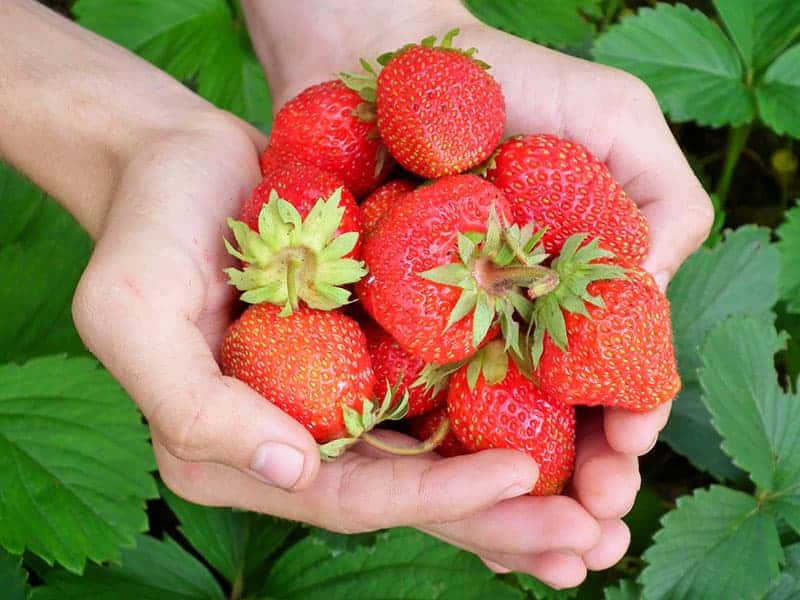
How cool is it, really, when you can make your own Strawberries, potatoes, cucumbers or raspberries have in the garden? In any case, self-sufficiency in food is incredibly sustainable. It helps you do that, Avoid plastic waste as well as save a lot of money and unnecessary transport routes.
Just set up a small flower bed or build a Raised bed from old palletsto grow in it the fruits and vegetables that you would like to enjoy.
Just use this Seasonal calendar for fruits, vegetables and saladsto learn more about the respective, ideal cultivation times.
Tip: By the way, fruit trees (for example, a pear or apple tree) will also bring you great joy in the future if you plant them in your garden today.
10. observe mixed cultivation and crop rotation
If your plants don't want to sprout properly, a depleted soil is often the main cause. Adherence to mixed cultivation and crop rotation can remedy this.
The sense of a mixed culture is a more uniform nutrient utilization through your grown plants - ultimately, it promotes healthy soil and saves lots of water and labor. For example, potatoes harmonize well next to spinach and corn, but less next to cucumbers and radishes.
Crop rotation, on the other hand, describes how well the crops grown in a specific bed over many years in a row harmonize with each other. It is generally recommended to get a Crop rotation plan for the next four years to create.
For example, strong growers such as tomatoes should not grow in the same bed every year. Instead, it makes sense to grow weak growers such as onions there the following year.
Tip: NABU introduces you to more information available here.
11. use natural pesticide
Not only your fertilizer, but also the pesticides should be natural in a sustainable garden and without toxic, chemical additives get by.
For one thing, you should basically more resistant plants in your garden prefer, on the other hand, you can, for example, from wormwood, tansy, horsetail, dandelion, chamomile and onions a wonderful, natural plant protection product The protective agent is rich in nutrients and keeps unwanted pests away from your plants.
12. prefer garden furniture from domestic woods
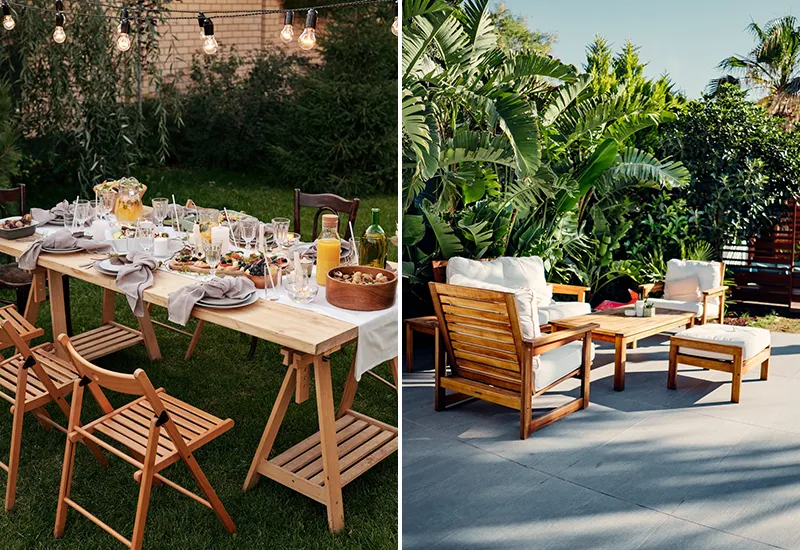
In order to Protect rainforests, you should use for your sustainable terrace Prefer garden furniture made of woods that come from domestic, sustainable forestry, and awarded with the FSC, PEFC or Naturland seal were.
Above all, avoid garden tables or garden chairs made of teak, bangkirai and mahogany - and instead look out for garden furniture made from the wood of Oaks, Douglas firs, robinias ("false acacias"), sweet chestnuts or larches were manufactured.
Whether Tables, sitting chairs, a bench or a deck chair - here you can prefer to look for environmentally friendly furniture for your garden:
Tip: Just as well, of course, you can choose your garden furniture buy used or build it yourself from existing materials. The necessary inspiration can give you for example my DIY dining table from old oak planks give, which could easily be used outdoors.
13. paving paths curved and not too dense
Just because stone deserts are notorious among environmentally conscious people doesn't mean that a natural garden has to be completely stone-free. On the contrary! An environmentally and animal friendly natural garden is mostly a successful interplay of stones and plants.
Curved and not directly adjacent Natural stone slabs For example, are perfect for an elegant path through your own garden. In addition they provide shelter for ants and other insects. In addition to stone slabs are suitable for the paths, for example, gravel or wooden paving.
14. leave garden waste lying rotting
Please do not hastily dispose of or burn cut branches, twigs and other wood residues. You will end up releasing even more CO2. Instead you can Deadwood piles or deadwood hedges create from it and let the wood residues rot in this way.
So you offer animals additional Shelter and can, for example, a small windbreak against Soil erosion erect
15. offer pond, hill & ditches for cooling
A flat garden certainly has its advantages, but it can also dry out or flood more easily. A sustainable natural garden, therefore, includes a few mounds and ditches. They protect the soil and plants from wind, but also from soil erosion by water.
Especially the so-called Crater bed is coming back into fashion - a deliberately created, heat-storing depression in the ground, with little wind and plenty of sunlight. It is ideal, for example, for Cultivation tomatoes and salads.
In addition to hills and ditches, especially provides a Garden pond or alternatively a small stream for even more life in paradise. Water-loving plant species, dragonflies, frogs and toads - they all come together here. Plus, of course, the rippling of the pond soothes your own mind as you lie in the hammock and enjoy a Book reads.
16. do without motors and prefer manual work
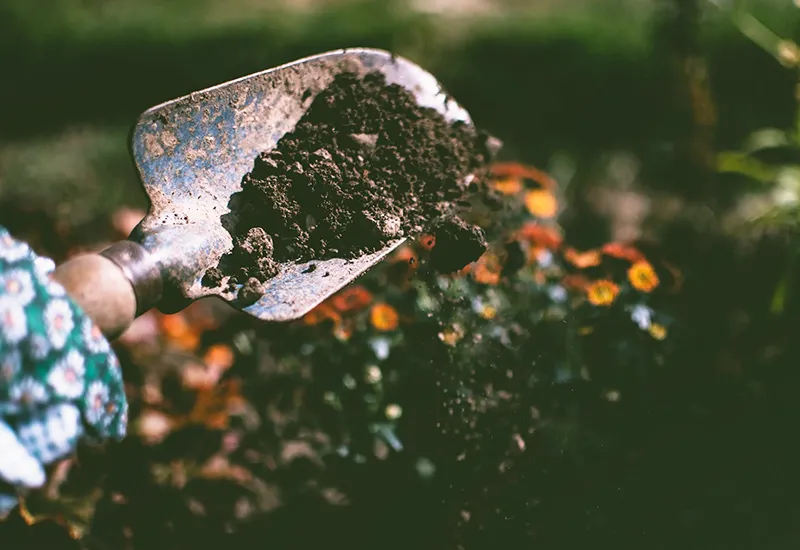
Basically, in a natural garden anyway, the motto is to let plants grow rather than constantly cut them back. Of course, this also applies to the lawn. Ideally, you should not cut the lawn every third day with a noisy and air-polluting lawn mower, but only less frequently and with a Sense. The fitness program is already included.
Significantly more comfortable and still relatively sustainable and quiet, are long-lasting Lawn mower with battery. You can then put the grass clippings on the compost. Leaves should simply be scraped together with your rake and the Pile of leaves leave as a shelter for hedgehogs and other animals. Loud Leaf blowers or leaf vacuums, on the other hand, are anything but sustainable.
Try to do without motors as much as possible and instead use to focus on environmentally friendly manual work. If you want to design your garden sustainably, you generally only need a few tools. A wheelbarrow, spade, watering can, hand shovel, pocket knife and secateurs, for example, are essential - but extremely quiet 😉 .
17. upcycle worn out items in the garden
An old, rusty bike that is unfit to ride in every way is still good as a Climbing aid for your plants or simply as nostalgic decoration in the garden. This upcycling idea will make your garden more exciting for each of its visitors.
But not only visually, you can bring benefits by using old items in new function. For example, an old dog bowl can become a water source for birds and other animals. There are no limits to the imagination.
So the next time you want to toss a seemingly unusable or broken item in the garbage can, think again about possible upcycling ideas.
18. collect and use rainwater
To save water for watering your plants, be sure to collect free rainwater in your organic garden. An underground Collection container (Cistern) is especially suitable for larger gardens. But also a simple Rain barrel already helps enormously to water your own garden sustainably.
When the barrel is open, it even serves as an oversized water source for birds. But make sure that the Water level always high enough is. Otherwise, some animals may fall in and have no chance to get out.
Tip: By the way, you can also use collected gray water from the sink or the cooled pasta pot to water your plants in the garden!
19. save water when watering
The climate change among other things, ensures that our gardens in Germany also need more and more water. The larger the garden, the more expensive the irrigation can become.
To Save water, you should make your garden best to water in the morning between four and seven o'clock or in the evening after sunset. - then the evaporation of the water is only about 10 to 30 percent. When watering at midday heat, on the other hand, a full 90 percent of the water evaporates.₃
In addition, you should use the Significantly increase the cutting height of your lawn mower in summer. The slightly taller grass protects the soil from drying out and so you can water your lawn less often with a clear conscience.
Tip: If you want to make the environmental problem of global warming even more tangible, check out the post on the Climate change statistics over. For more advice you can also check out my Climate protection tips for everyday life view
20. save energy through minimalist lighting
By pulling weeds by hand, letting the lawn grow a little longer, and using an energy-efficient electric mower with sharp blades, you can save a lot of money in the garden. Save energy. However, these Savings in many gardens canceled out by the excessive lighting. At the same time, this form of Light pollution also still countless garden animals with fatal consequences.
Your neighbors can also admire your garden in natural daylight! Therefore, design the lighting as minimalist as possible and prefer, if necessary, solar powered LED lights with motion detector, which are used as needed in the areas where you are.
Additional Tip: Also your Garden house should be sustainable be! When choosing, look for FSC-certified wood from ecological forestry - and let your Garden shed also fond of climbing plants overgrown.
Set up favorite place and enjoy the sustainable garden!
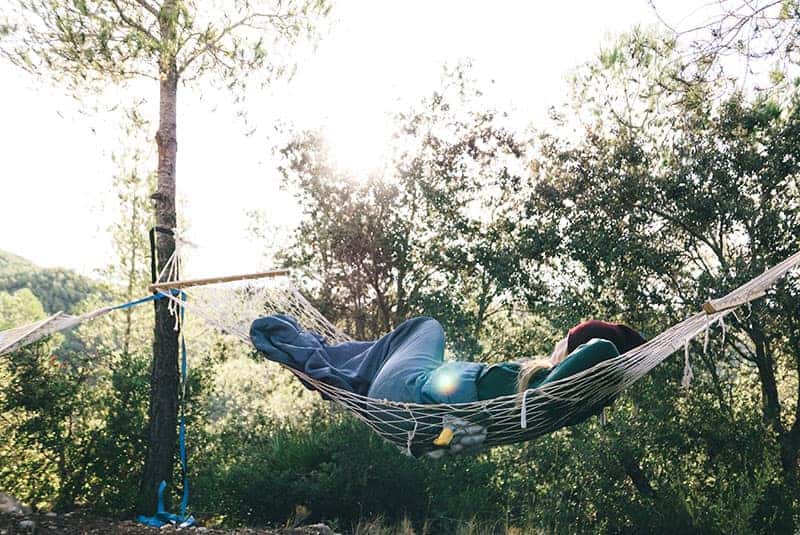
We maintain our greenery on our own property because there we are feel good and relax can. Accordingly, you too should set up a favorite spot in your natural garden where you can really switch off can. How about a bench or a hammock overlooking the pond? Plus the chirping of birds and the scent of thyme and lavender. Just an idea 🙂
"Adopt the pace of nature: her secret is patience."
Ralph Waldo Emerson (more at Nature Quotes)
Simply turn your sustainable garden step by step into a Mecca of biodiversity and avoid lifeless stone deserts! A wild, species-rich natural garden has much more to offer and is also easy to maintain. Now you have the right tips for sustainable gardening at hand. You can find even more practical tips in the Book "Fresh harvest by Huw Richards, which has also been extremely helpful to me. If you like, get it here*.
I hope you find the ideas and advice for a wildlife and eco-friendly garden useful. Do you have any questions, suggestions or further tips for sustainable garden design? Then I look forward to your comments!
Stay sustainable,

PS: Feel free to look further in the Sustainability Blog from CareElite. For example, learn the best tips for a sustainable lifestyle or simple Ideas for waste prevention in everyday life know
References:
₁ Parish, Sirin, Charman, Joosten, Minayeva, Silvius, Stringer (2008): Assessment on Peatlands, Biodiversity and Climate Change: Main Report. Global Environment Centre and Wetlands International. S.179.
₂ Smarticular Publishing: Make your own organic sprays against pests and plant diseases. https://www.smarticular.net/pflanzliche-mittel-gegen-blattlaeuse-und-pflanzenkrankheiten. [22.03.2023].
₃ VGL Verlagsgesellschaft mbH (Gartencenter.de): Garden irrigation: automatic plant watering. https://www.gartencenter.de/automatische-pflanzenbewaesserung. [22.03.2023].

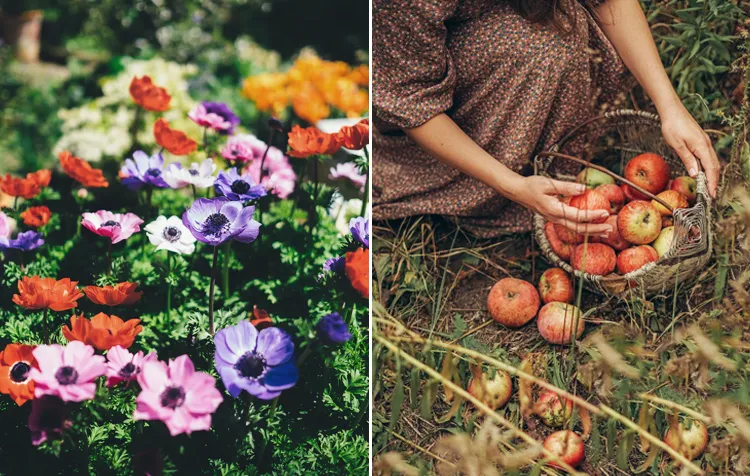
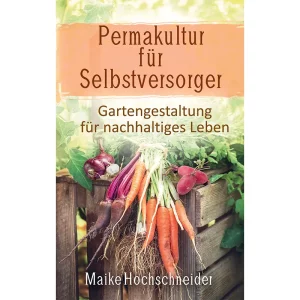
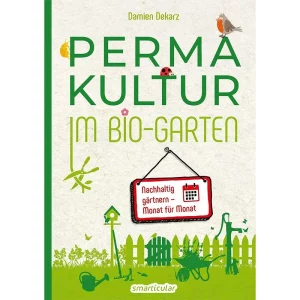
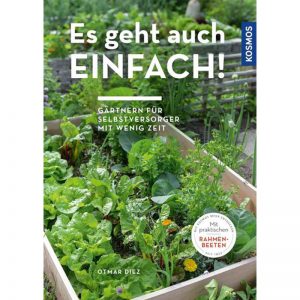







I bought a new house with a big garden and I am looking forward to next summer. In the meantime, I would like to collect ideas to best prepare this. I would love to have my own vegetables in the garden! Fruit trees will definitely bring great joy. Thanks for the tip, I will definitely read more about it!
Hey Nora, thanks for your comment! Then have fun with the implementation next year and a good move!
Many greetings, Christoph
Thank you for a super article regarding natural garden design. I also think that a natural garden is usually a successful interaction of stones and plants. I think I personally do not dare to "self-made paving". I prefer to hire a professional.
Hey Kyra! Thanks for your feedback! Everyone is free to decide that, that's the beauty! 🙂
Best regards
Christoph
It's good to know that even small tips can go a long way. The outdoor design of my garden is extremely important to me, so I really like your tips on a sustainable, natural, wild garden. I will start right away with the tip from the compost!
Hello Manuel! Thanks for your feedback! Then have fun with the implementation!
Best regards
Christoph
Comments are closed.